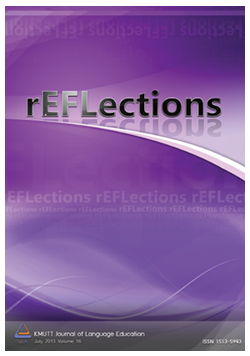Code-Switching Phenomenon among EFL Learners
Main Article Content
Abstract
This study investigates the issue of code switching (CS), which occurred in daily conversation among bilinguals. The participants were from three different countries, the Republic of China, the Republic of Indonesia and Kingdom of Thailand. The data include the recordings of conversation in different settings. Recent studies examine this phenomenon both in the classroom context (Rose & van Dulm, 2006; Iqbal, 2011) and in everyday life conversation (AL-Hourani & Afzah, 2013). Empirical research has shown that the practice of alternating or mixing languages is not only common, but serves important communication strategies (Heller, 1992; Myers-Scotton, 1992). In addition, code switching is considered a skill used in early attempts of playing with the languages involved in the conversation (Arnfast & Jorgensen, 2003). The results of this paper reveal that apart from being a communication tool and skill, code switching represents an in-group identity and it is highly related to emotional expression.


